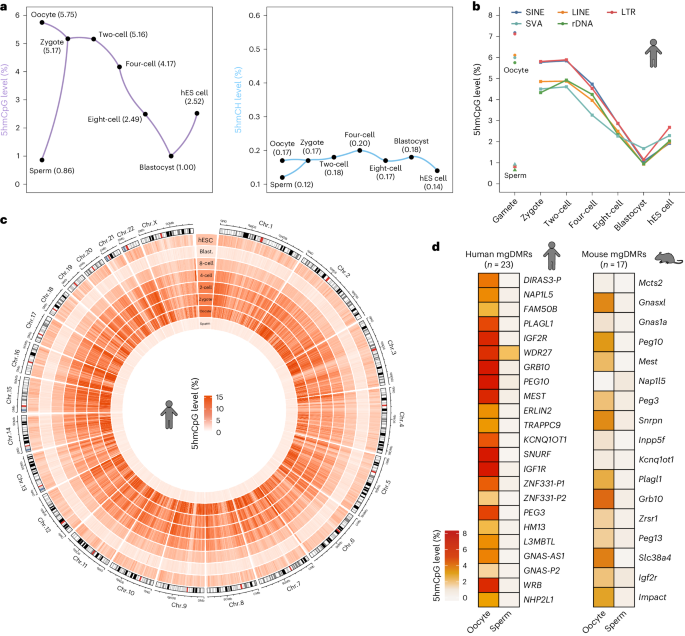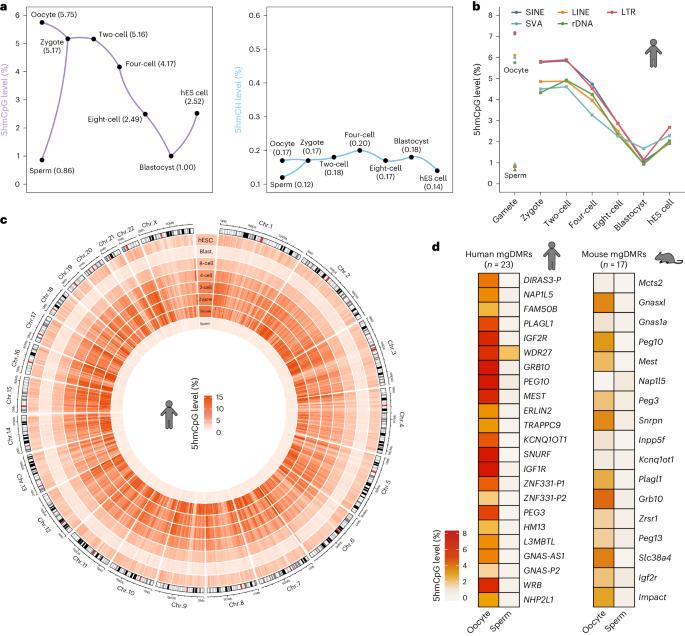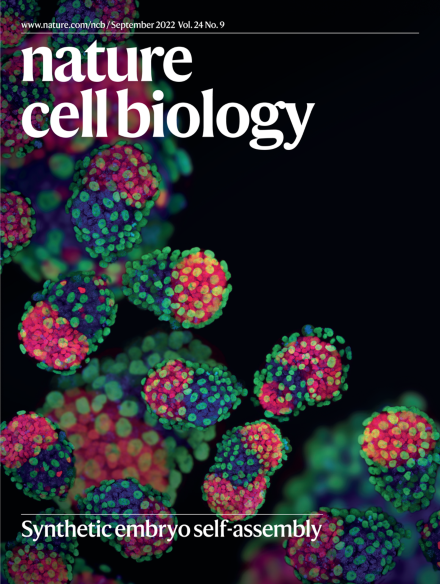Distinct dynamics of parental 5-hydroxymethylcytosine during human preimplantation development regulate early lineage gene expression
IF 17.3
1区 生物学
Q1 CELL BIOLOGY
引用次数: 0
Abstract
The conversion of DNA 5-methylcytosine (5mC) to 5-hydroxymethylcytosine (5hmC) by TET enzymes represents a significant epigenetic modification, yet its role in early human embryos remains largely unknown. Here we showed that the early human embryo inherited a significant amount of 5hmCs from an oocyte, which unexpectedly underwent de novo hydroxymethylation during its growth. Furthermore, the generation of 5hmC in the paternal genome after fertilization roughly followed the maternal pattern, which was linked to DNA methylation dynamics and regions of sustained methylation. The 5hmCs persisted until the eight-cell stage and exhibited high enrichment at OTX2 binding sites, whereas knockdown of OTX2 in human embryos compromised the expression of early lineage genes. Specifically, the depletion of 5hmC affected the activation of embryonic genes, which was further evaluated by ectopically expressing mouse Tet3 in human early embryos. These findings revealed distinct dynamics of 5hmC and unravelled its multifaceted functions in early human embryonic development. Liang, Yan, Long, Ji et al. find that the origin and dynamics of 5-hydroxymethylcytosine (5hmC) during early development are not conserved between humans and mice and that 5hmC contributes to the activation of human embryonic genes.


人类胚胎植入前发育过程中亲本 5-羟甲基胞嘧啶的不同动态调节早期血统基因的表达
DNA 5-甲基胞嘧啶(5mC)通过 TET 酶转化为 5-羟甲基胞嘧啶(5hmC)是一种重要的表观遗传修饰,但它在人类早期胚胎中的作用在很大程度上仍不为人所知。在这里,我们发现人类早期胚胎从卵母细胞中继承了大量的 5hmC,而这些卵母细胞在生长过程中意外地发生了新的羟甲基化。此外,受精后父系基因组中 5hmC 的生成大致遵循母系模式,这与 DNA 甲基化动态和持续甲基化区域有关。5hmC一直持续到八细胞阶段,并在OTX2结合位点表现出高度富集,而在人类胚胎中敲除OTX2会影响早期系基因的表达。具体来说,5hmC的耗竭影响了胚胎基因的激活,这一点通过在人类早期胚胎中异位表达小鼠Tet3得到了进一步评估。这些发现揭示了 5hmC 的独特动态,并揭示了它在人类早期胚胎发育中的多方面功能。
本文章由计算机程序翻译,如有差异,请以英文原文为准。
求助全文
约1分钟内获得全文
求助全文
来源期刊

Nature Cell Biology
生物-细胞生物学
CiteScore
28.40
自引率
0.90%
发文量
219
审稿时长
3 months
期刊介绍:
Nature Cell Biology, a prestigious journal, upholds a commitment to publishing papers of the highest quality across all areas of cell biology, with a particular focus on elucidating mechanisms underlying fundamental cell biological processes. The journal's broad scope encompasses various areas of interest, including but not limited to:
-Autophagy
-Cancer biology
-Cell adhesion and migration
-Cell cycle and growth
-Cell death
-Chromatin and epigenetics
-Cytoskeletal dynamics
-Developmental biology
-DNA replication and repair
-Mechanisms of human disease
-Mechanobiology
-Membrane traffic and dynamics
-Metabolism
-Nuclear organization and dynamics
-Organelle biology
-Proteolysis and quality control
-RNA biology
-Signal transduction
-Stem cell biology
 求助内容:
求助内容: 应助结果提醒方式:
应助结果提醒方式:


